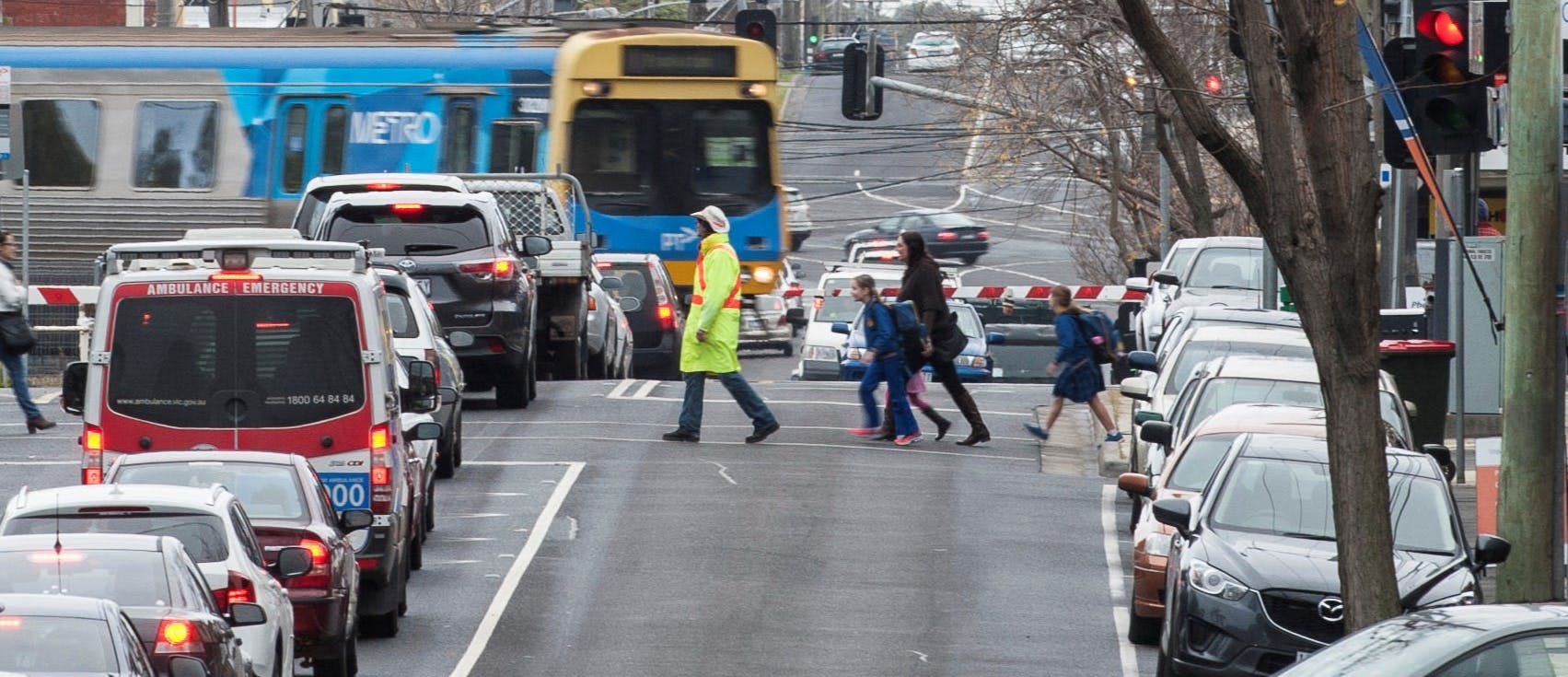Draft Integrated Transport Strategy
Consultation has concluded
Kingston Council has been working on a strategy to guide future traffic movement across our municipality.
Last year, as part of the project Council prepared a draft background report focussing on the proposed vision, objectives and key themes for the draft strategy. Feedback received from the community on the draft background report has helped inform the draft strategy.
The draft Integrated Transport Strategy covers a broad range of travel modes - including walking, cycling, driving and public transport.
What are we trying to achieve?
By looking at transport as a connected network - rather than separate or competing travel modes - we hope to shape transport in Kingston into a connected, sustainable and co-ordinated system.
Central to this idea is promoting more convenient access to key destinations and reducing the need to travel by private motor vehicles.
Integrated transport means local, regional and metropolitan transport agencies (and other groups) working together to deliver a range of ways people and goods can reach their destination.
Background and context:
The City of Kingston will experience significant growth in population and development over the next 15 years. The population projected by the State Government in Victoria is approximately 200,000 by 2036.
To respond to these challenges, the State Government has set a vision to make Victoria’s transport system more integrated, sustainable, inclusive, prosperous, and environmentally responsible.
The draft Integrated Transport Strategy seeks to align with the State’s vision by delivering a set of objectives and actions needed to achieve the municipality’s vision of a city with a connected, integrated and sustainable transport network that is safe, healthy, accessible, efficient, and reliable.
The strategy will provide long-term direction and guidance in integrated transport and land-use planning. This will help Council make informed decisions about future investments, strategic planning and policy direction. This will ensure that future growth of Kingston meets the diverse needs of our residents, visitors and workers.
The Kingston Integrated Transport Strategy will form the ‘umbrella’ document under which further transport strategies will be situated - for example strategies on walking, cycling, road safety, and parking.
The draft Integrated Transport Strategy
You can download the draft Integrated Transport Strategy here, or via the Document Library to the right. A summary of the vision, themes and key objectives can be found below. For more detail and the proposed actions for each objective, please refer to the draft Integrated Transport Strategy.
Our Vision:
Kingston is a city with a connected, integrated, and sustainable transport network that is:
- SAFE - for all users and attractive to use.
- HEALTHY - supporting transport choices that are active and reduce energy air pollution and emissions.
- ACCESSIBLE - to as many people that wish to use it.
- RELIABLE - so journey times are minimise and predictable - thus promoting economic prosperity.
- EFFICIENT - balancing the capacity of the network between all modes of transport and making moving around easy.
Our key objectives:
We have five key objectives that will help bring to life our vision for a well-connected travel network in Kingston.
- Walking and cycling – to make walking and cycling the preferred transport choice, particularly for short local trips.
Provide suitable new or improved:
• Cycle routes and paths.
• Pedestrian/cycle crossings.
• Cycle parking.
• Wayfinding and signs.
• Public lighting.
• Footpaths, and walking routes, including missing links in these networks.
• Shade from trees, public lighting, water fountains, and seating. - Mobility – to provide a transport network that allows people of all abilities to travel.
• Encourage children to walk and cycle to schools.
• Review access around schools, public transport and major destinations so they are safe and accessible for everyone.
• Review parking around schools and key destinations.
• Provide programs for older people and people with a disability.
• Advocate for more equitable, affordable and accessible transport for all users. - Land-use and development – to promote land-use and transport choices that are sustainable, and reduce journey times and distance by concentrating development in activity and neighbourhood centres close to public transport routes.
• Guide high-density development to activity centres and public transport routes.
• Ensure significant new developments support sustainable travel through ‘green travel plans’ that promote safe, healthy and sustainable travel modes.
• Review ‘structure plans’ so activity centres are distinctive, accessible, safe, appealing and thriving.
• Create suburbs where most peoples' travel needs are within a 20-minute walk, cycle or local public transport trip of their home. - Better public transport – advocate to state government for improved public transport that is reliable, frequent, safe, and connecting people and goods to where they want to go.
Work with relevant agencies to create:
• Train stations and bus stops that are ‘best practice’ for all users.
• High-frequency public transport.
• Appropriate commuter parking at stations.
• Better travel information.
• More freight transported by rail.
- The road network – to manage our road networks so that it is safe, promotes sustainable transport, and reduces congestion.
• Provide traffic and transport programs to make roads safer for all road users, including cyclists and pedestrians.
• Recognise that streets are places for people to live, work and play as well for the movement of people and goods.
• Prioritise sustainable modes over private cars through a ‘road user hierarchy’.
• Allocate more road space for sustainable modes (bus, cycle, pedestrian priority).
• Review speed limits on key roads.
• Review the ‘last kilometre’ of freight movement to improve way-finding.
• Review and support new transport technologies e.g. electric vehicles, charging points, speed limiters, car share schemes, and smart roads technology.
Have your say:
We are interested in your thoughts on the draft Integrated Transport Strategy. You can share your views by:
- Taking part in our online survey below
- Make a further submission by emailing traffic@kingston.vic.gov.au or mailing PO Box 1000, Mentone 3194.



